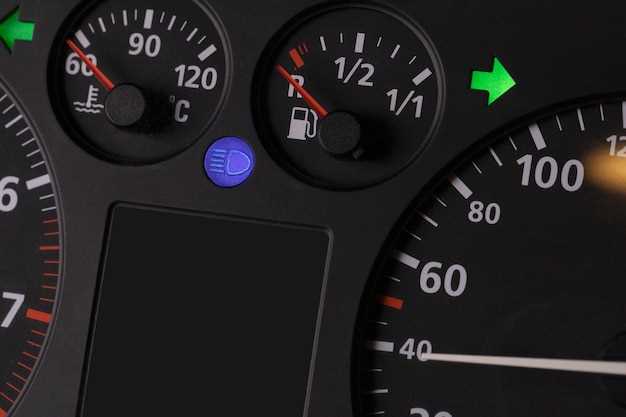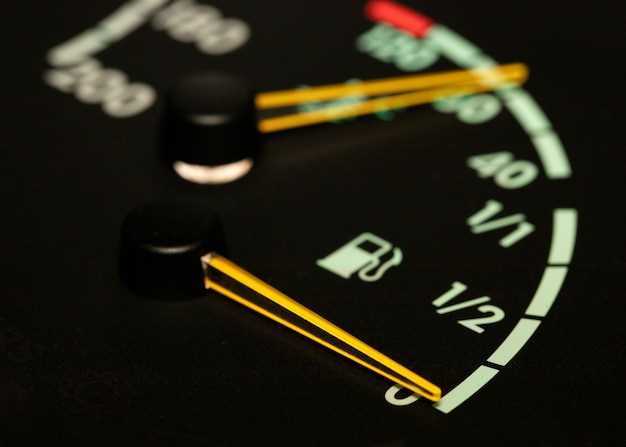
How to fix hard starts due to fuel issues
- Dominique Kaye
- 0
- Posted on

Hard starts in vehicles can often be traced back to issues with fuel delivery. When the necessary amount of fuel is not reaching the engine, starting can become a frustrating challenge. Diagnosing these fuel-related problems is crucial not only for the vehicle’s performance but also for the longevity of its components.
A well-functioning fuel system is integral to the smooth operation of an engine. If there are obstructions or malfunctions that inhibit fuel delivery, it can lead to a host of issues, including difficulties with starting. Understanding the symptoms of these problems can help owners take the right steps towards a resolution.
In this article, we will explore various fuel-related factors that contribute to hard starts. From examining fuel filters and injectors to understanding the role of fuel pumps, we aim to provide a comprehensive guide for diagnosing and fixing these common issues. Ensuring efficient fuel delivery is essential for transforming stubborn starts into effortless ignition.
Diagnosing Fuel Delivery Issues Affecting Start-Up

When experiencing hard starts, one of the primary suspects is fuel delivery problems. Effective diagnosis involves several steps to pinpoint the root cause of the issue. Begin by inspecting the fuel system components, including the fuel pump, filter, and injectors. A malfunctioning fuel pump may not supply adequate pressure, resulting in a weak fuel delivery rate that can hinder engine start-up.
Next, check the fuel filter for clogs or obstructions. A dirty filter can restrict fuel flow, causing the engine to struggle during ignition. Replacing a blocked fuel filter is a straightforward solution that may resolve hard starting issues immediately.
Examine the fuel injectors as well, as they could be clogged or malfunctioning, leading to improper fuel atomization. Cleaning or replacing faulty injectors ensures that the engine receives the correct amount of fuel at the correct time, which is critical for a smooth start.
Additionally, verify the fuel pressure with a gauge to ensure it meets the manufacturer’s specifications. Fluctuating or low pressure readings may indicate a problem with the fuel lines or connections. Look for leaks or damaged hoses that could be affecting fuel delivery.
Finally, consider the quality of the fuel itself. Contaminated or poor-quality fuel can lead to starting difficulties. Using a fuel stabilizer or switching to a different fuel supplier may help eliminate start-up problems caused by fuel quality issues.
Cleaning and Replacing Fuel Filters for Better Performance

Fuel filters play a crucial role in ensuring optimal delivery of fuel to the engine. A clean filter prevents contaminants from entering the fuel system, which can significantly affect engine performance. Over time, fuel filters can become clogged, leading to hard starts and reduced efficiency.
Regular cleaning or replacement of fuel filters is essential to maintain smooth operation. A clogged filter restricts fuel flow, which can cause difficulties during ignition. This restriction can manifest as a hard start, where the engine struggles to initiate combustion. When the filter is clean, fuel can flow freely, allowing for seamless engine performance.
Cleaning a fuel filter involves removing it from the fuel line and using pressurized air or a solvent to eliminate any built-up debris. This process can restore the filter’s efficiency, but it should be done carefully to avoid damage. In some cases, filters are not designed to be cleaned and should be replaced entirely.
Replacing a fuel filter should be done according to the manufacturer’s recommendations. Typically, filters need changing every 30,000 to 50,000 miles, but this can vary based on fuel quality and driving conditions. Installing a new filter improves the fuel delivery system, enhances performance, and reduces the chances of hard starts.
By keeping fuel filters clean and well-maintained, vehicle owners can enjoy smoother starts, better fuel economy, and a longer lifespan for their engines. Prioritizing this simple maintenance task can prevent more severe problems down the line, resulting in a more reliable driving experience.
Adjusting Fuel Pump Pressure to Eliminate Hard Starts
One of the common causes of hard starting issues in vehicles is inadequate fuel pump pressure. Proper fuel pressure is essential for the engine to receive the correct amount of fuel to initiate combustion. When this pressure is too low, the engine struggles to start, leading to frustrating delays.
To adjust fuel pump pressure, begin by ensuring that the fuel system is free of any obstructions. Inspect the fuel filter and replace it if it’s clogged. A dirty filter can hinder fuel flow, contributing to low pressure and hard starts.
Next, use a fuel pressure gauge to measure the existing fuel pressure at the rail. Compare this reading to the manufacturer’s specifications, which can typically be found in the vehicle’s service manual. If the pressure is below the recommended range, adjustments will be necessary.
Adjusting the fuel pump can be done by modifying the fuel pressure regulator. This component controls the fuel pressure in the system. If the regulator is adjustable, refer to the manufacturer’s guidelines for the correct procedure. Increase the pressure incrementally and monitor the engine’s response during each adjustment.
If the fuel pump is malfunctioning or unable to maintain pressure even after adjustments, replacing the pump may be necessary. A new, high-quality fuel pump will ensure that the engine receives adequate fuel, significantly reducing the chances of hard starts.
Additionally, keep an eye on the electrical connections and wiring to the fuel pump. Poor electrical connections can lead to insufficient pump operation, impacting fuel delivery. Ensure all connections are secure, and consider testing the pump with a multimeter to check for proper voltage and ground.
Regular maintenance of the fuel system, including checking the fuel pump pressure, is crucial for optimal engine performance. By making the appropriate adjustments and ensuring the system is functioning correctly, hard starting issues can be effectively eliminated.
